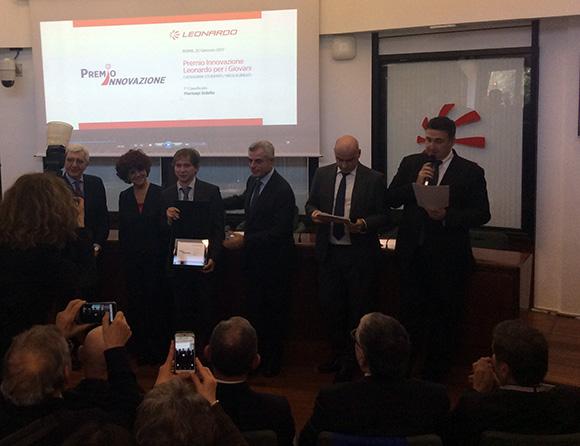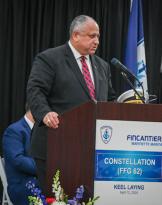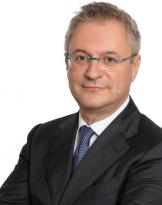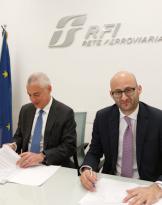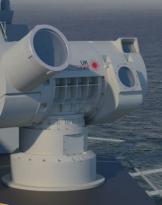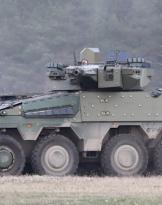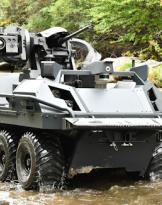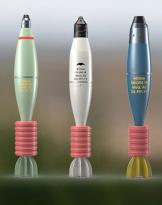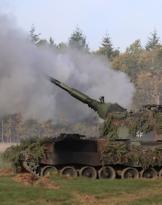The Leonardo 2016 Innovation Award is also full of adhesions this year and is confirmed as one of the most awaited appointments to explore the new frontiers of high technology. The projects presented by Group employees are almost 700 and received from all Leonardo's sites in Italy, the UK and the rest of the world. About 5.000 the contacts generated on the online platform dedicated to the Prize for Young People whose winners (three in the category students / recent graduates, three in that doctoral student) will have the opportunity to take advantage of training internships in the Group, in addition to receiving financial awards.
Innovation is a fundamental lever of Leonardo's way of doing business, a leading company in the high-tech sector that is committed to enhancing a unique and invaluable wealth of knowledge, to be cultivated with passion and determination. Hence the Innovation Award, an initiative that has been involving Group employees all over the world for more than ten years and, for the second consecutive year, university students, ready to face the technological challenges of the future. The winners were awarded today in Rome during a ceremony attended by the Minister of Education, University and Research, Valeria Fedeli and the top management of the Company.
"Recognizing the talent of young people and giving confidence to their ambitions. Because the future of growth for the whole country depends on them. It is the main objective of the Ministry that I represent - affirms Minister Valeria Fedeli - and I am happy that it is also the purpose of a commendable initiative such as the Leonardo Innovation Award in which we participate today. The investment on the new generations must be increasingly shared by the whole society because we are all responsible for the world of which we lay the foundations today and that we will live tomorrow ".
"Anticipating tomorrow's technologies today, in a sector characterized by rapidly evolving scenarios, is the key to measuring oneself with the competitive strength of large technology and emerging investor countries. It is only through the ability to innovate that one can win the technological challenge of the third millennium "- emphasizes Mauro Moretti, Managing Director and General Manager of Leonardo -." With the Leonardo Innovation Award - adds Moretti - we have once again involved young university students because it is in them that lies that visionary attitude to outline future developments, whether they are linear projections of current trends or that take divergent and unpredictable directions from them. Favoring and enhancing a scientific culture of the school system and strengthening the dialogue between the business world and the academic world - concludes the Chief Executive Officer of Leonardo - are other indispensable elements that may exist or make a difference in consolidating the country's technological leadership ".
A PC keyboard that can self-power by re-using the energy generated by pressing the keys. Anthropomorphic robots able to perform precision finishing in the last production phase of helicopter rotors. Innovative electrodes made of nanostructures that allow to multiply the lithium battery life of electronic devices such as tablets, mobile phones and notebooks. These are some of the projects presented by the young graduates and PhD students of the scientific faculties of Italian universities that have won the Leonardo 2016 Innovation Award and which have predominantly dealt with issues related to the generation and storage of electricity. Among the projects of the employees stand out those related to an innovative infrared system for naval units that guarantees, with greater efficiency than the systems currently in use, the continuous surveillance on 360 degrees around the ship and a patent that allows to integrate and optimize the different telecommunications networks used by the companies managing the Air Traffic Control service.
Most of the winning projects present, as a common element, attention to environmental sustainability, one of the most important issues in thinking about the technologies of the future and in line with the Company's commitment to integrate the management of environmental aspects with the objectives of business.
The Leonardo 2016 Innovation Award Winners
Youth Award
Established since last year, the Award is aimed at young students of the scientific faculties of all Italian universities with the aim of enhancing their talent and ideas and preparing them for comparison with the business world. The competition has proposed to candidates, divided into the categories of students / graduates and PhD students, the development of an innovative project on future technologies, with reference to specific research areas related to the business sectors of Leonardo: protection from micro-UAV threats ; abatement of acoustic noise, inside and outside, in aeronautical and ground platforms; high efficiency generation and storage of electricity; digital innovation.
First prize for PhD students: Solar-battery integration with photopolymers (Federico Bella - Polytechnic of Turin-Department of Applied Science and Technology). - Generation and high efficiency storage of electricity -. The purpose of the project is the use of innovative materials for the development of devices that integrate photovoltaic generation with storage in batteries. These are particular polymers (photopolymers) which, unlike those produced with industrial processes with high environmental impact - high temperatures, use of solvents or chemical reagents - are instead obtainable through processes that only require the use of a light source. The project is therefore very useful for industrial applications and pays particular attention to environmental and economic sustainability.
Second prize for PhD students: TIGER: GenerRa Energia keyboard (Arnaud Gigot - Politecnico di Torino - Materials Science and Technology). -High efficiency generation and storage of electricity-. The project aims at energy recovery through the conversion of the mechanical energy used in pressing the keys of a PC keyboard, into electrical energy for applications in a sector of great commercial diffusion. For this purpose, piezoelectric transducers are used, i.e. materials capable of generating a potential difference when subjected to mechanical deformation. The keyboard is then able to use the energy generated by finger pressure and reuse it to contribute to its own power.
Third prize PhD students: Synthesis of nanostructured C / Si materials for electrodes optimized for Lithium batteries (Marco Natali, La Sapienza University, Rome - Nanosciences and Electromagnetism). - Generation and storage with high efficiency of electricity -. The limits of all common electronic devices that use lithium batteries, including tablets and mobile phones, is the duration of battery charge. The project aims to develop innovative electrodes made of nanostructures (structures with extremely small dimensions, of the order of a nanometer) of carbon and silicon. The use of these electrodes offers enormous advantages in terms of electrical conductivity and allows the batteries to have greater efficiency / durability. The project has a high industrial impact in relation to the vast range of application fields of lithium batteries.
New graduates' first prize: Converter with low switching losses to supply three-phase high-speed electric motors for aeronautical applications (Pierluigi Sidella - Polytechnic of Bari - Master's Degree in Electrical Engineering) - Generation and storage with high efficiency of electric energy -: It is an alternative low loss electrical power converter to inverters with SiC (silicon carbide) MOSFETs with multidisciplinary application, potentially of great interest in the "more / all electric aircraft" sector.
Second graduate prize: Optimization of the post machining process of rotor parts in titanium alloy (Marco Verrecchia - University of Cassino and Southern Lazio - Master's Degree in Mechanical Engineering). - Digital Innovation -. Project in the field of industrial robotics with innovative methodological development and interesting field validation. The study is based on the technical feasibility of a process related to the final phase of mechanical processing, completely automated, using anthropomorphic robots. This innovation would bring many benefits in terms of reducing the duration of the processing, reducing the time for stocking the parts in the warehouse, improving the surface quality of the product and reducing / eliminating processing defects.
Third graduate award: Energy Harvesting using magnetostrictive materials (Stefano Fabrizio - University of Sannio - Master's Degree in Energy Engineering). - Generation and storage with high efficiency of electricity -. The project aims to recover electrical energy from mechanical energy otherwise dissipated in the environment, through the use of magnetostrictive materials (materials whose magnetization is modified as a consequence of mechanical actions, pressure or expansion). The project is particularly relevant for applications focused on environmental sustainability and energy saving.
Employee Award
For over ten years Leonardo has rewarded innovative projects for employees within the company all over the world.
For the second year the projects are divided into categories: Incremental innovation, which aims to bring improvement to existing products; Radical innovation, able to generate new products or create opportunities in new markets for existing products and finally the Idea category, related to those projects that do not have an impact on the business in the short term, but can guarantee a competitive advantage in the future. Added to this is the award for the best patent.
For the Incremental Innovation category: A. Pozzi (SAS) and G. Barani (EDTN) DSS-IRST: a new Infrared Search & Track system based on multiple distributed sensors, passive ranging capability and new detection and track processing. The proposal concerns an innovative IRST system (Infra Red Search and Track, i.e. a passive infrared system, therefore not interceptible, for the identification and tracking of targets (missile / naval / aircraft) for naval units that integrates multiple sensors, each of the which can cover a certain angle of view. The sensors, distributed along the perimeter of a platform, allow a complete and continuous surveillance of the airspace around it. The system, called DSS-IRST (Distributed Sensor System - IRST), it therefore allows constant surveillance on all 360 ° around the ship and immediate detection of the distance of any threats, thus overcoming the limits of a scan performed by a single rotating sensor, such as the update time of the detected images.
For the Radical Innovation category: A. Genovese (EDTN) “X and Ka Bi-Band Antenna for Radar Applications”. The object of the award is an antenna that operates simultaneously on the two frequency ranges X and Ka, developed for Radar sensors dedicated to the control of naval pointing systems, which otherwise use two separate antennas, one for each of the two frequencies. The innovation mainly consists of a configuration in which the two frequencies on which the radar operates are directed in the same direction through a dichroic mirror - that is, capable of reflecting one frequency (X) and transmitting the other (Ka) - capable of obtaining high performance performance and reducing costs.
For the idea category: M. Iannone and E. Vitiello (Aircraft) “Protective films in nano-composite material with graphene particles with surface extension”. The innovative project relates to the insertion of Graphene particles (carbon sheets of monatomic thickness) within the stratification of the parts in composite material, to contrast the diffusion inside the structures in composite material of substances such as water or solvents. organic, which diminish its properties or prevent its use for structural applications.
Best Patent: P. Fantappie (SIS) "Ground station, network and method for a unified ground-to-air and air-to-ground communication system operating in VHF data link mode 2". The patent protected solution allows to integrate and optimize the different telecommunication networks used by the companies that manage the service for Air Traffic Control. This means overcoming the limits that have hitherto characterized telecommunications between the control tower and the aircraft, in the event that these are managed by different operators. The patent, called "Double Squitter" (ie double language), will also allow national Authorities (eg ENAV, etc ....) to create a single integrated network for the provision of these services to companies aerial. Since the new air traffic control standard, which entered into force in 2014 and based on the radio protocol called VDL2 which also provides for the exchange of data as well as voice communications, will replace the old ACARS system in the transmission of messages between aircraft and towers control, the Leonardo solution is a candidate to become an essential piece for the industrial implementation of such services and networks.

